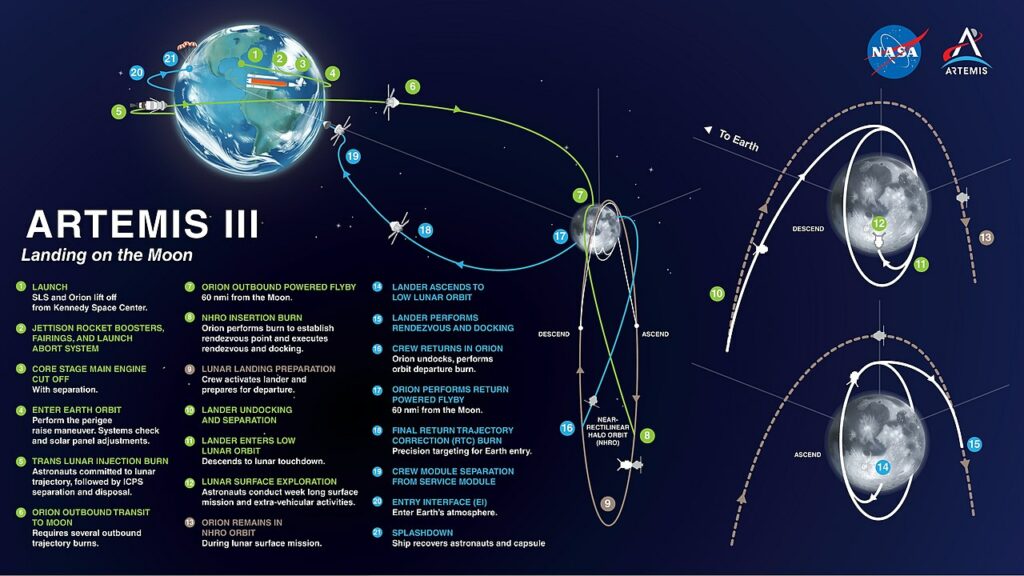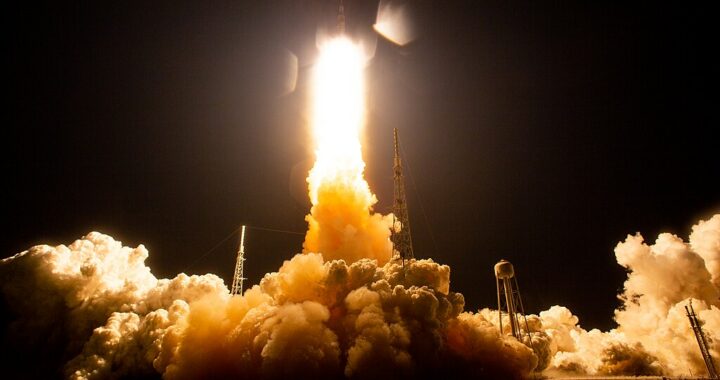Embarking on Artemis 2 and Artemis 3: A Journey Back to the Lunar Surface
by Patrick Wilson
The allure of the Moon, humanity’s celestial companion, has captivated our imaginations since the dawn of civilization. Its ethereal glow, its stark topography, and its enigmatic presence have fueled dreams of exploration and discovery. Now, after a hiatus of over five decades, we stand poised to return to the lunar surface, not as fleeting visitors but as pioneers of a new era of lunar exploration. Artemis 2 and Artemis 3, the next two missions in NASA’s ambitious Artemis program, herald a renewed commitment to unraveling the Moon’s secrets and establishing a sustainable human presence on its regolith-covered plains.

Artemis 2: Blazing a Trail for Artemis 3
Artemis 2, scheduled for launch in 2024, will mark a pivotal step in our lunar resurgence. This crewed mission will venture beyond the Moon, propelling the Orion spacecraft into a near-rectilinear orbit around our celestial neighbor. Astronauts will embark on a grand loop around the Moon, venturing thousands of miles beyond the lunar surface and gaining unparalleled perspectives of our planet Earth. The mission will not only test the Orion spacecraft’s deep-space capabilities but also pave the way for Artemis 3, the first crewed lunar landing since Apollo 17 in 1972.

Artemis 3: Reclaiming Lunar Footsteps
Artemis 3, slated for launch in 2025, will be a momentous occasion, marking the return of humans to the Moon after a half-century absence. Astronauts will descend upon the lunar surface, setting foot on the South Pole region, a terrain unexplored by previous missions. This mission will lay the groundwork for establishing a permanent human presence on the Moon, utilizing lunar resources and fostering scientific research in a new and challenging environment.
A Paradigm Shift in Lunar Exploration
Artemis 2 and Artemis 3 represent a paradigm shift in lunar exploration. Unlike the Apollo missions, which focused primarily on flag-planting and scientific sampling, Artemis aims to establish a sustainable human presence on the Moon. This endeavor will require developing innovative technologies, forging international partnerships, and cultivating a new generation of space pioneers.
Scientific Discovery and Technological Prowess
Artemis will not only expand our understanding of the Moon but also drive technological advancements that will benefit our lives on Earth. Studies of lunar geology, resource utilization, and radiation effects will contribute to our knowledge of planetary formation and provide insights into protecting astronauts on future deep-space missions. Technological developments in propulsion systems, life support systems, and robotics will have far-reaching applications in various industries, from healthcare to environmental monitoring.
International Collaboration and Global Inspiration
Artemis is a global endeavor, uniting space agencies and scientists from around the world in a shared pursuit of lunar exploration. This collaboration will foster scientific breakthroughs, technological innovation, and a renewed sense of international cooperation in the pursuit of space exploration.
A Legacy of Exploration
Artemis 2 and Artemis 3 represent a monumental step in humanity’s ongoing quest to understand the cosmos and our place within it. These missions will not only expand our scientific knowledge but also foster technological innovation, international collaboration, and a renewed sense of inspiration for future generations. As we embark on this journey back to the Moon, we stand on the precipice of a new era of lunar exploration, poised to unlock the secrets of our celestial companion and pave the way for future endeavors into the depths of space.

























